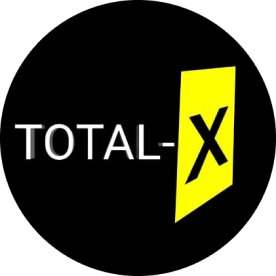razorpay_web_totalxsoftware 0.0.4  razorpay_web_totalxsoftware: ^0.0.4 copied to clipboard
razorpay_web_totalxsoftware: ^0.0.4 copied to clipboard
Package for razorpay web totalxsoftware team
Razorpay Web Integration for TotalXSoftware #

razorpay_web_totalxsoftware is a Flutter web package for integrating Razorpay payments using Firebase Cloud Functions. This guide will walk you through setting up a Firebase Cloud Function to create Razorpay orders and integrating it with a Flutter web application.
Features #
- Secure Razorpay payment processing via Firebase Cloud Functions.
- Handles payment success, failure, and error callbacks.
- Supports customizable user profiles and data.
Prerequisites #
Ensure you have:
- A Razorpay account with API credentials (Key ID and Key Secret).
- A Firebase project with Cloud Functions enabled.
- A Flutter web project ready for integration.
Firebase Cloud Function Setup #
1. Initialize Firebase Functions in your project #
First, open a terminal, navigate to your Firebase project directory, and initialize Firebase Functions:
firebase init functions
Firebase Cloud Function Setup #
You need to set up Firebase Cloud Functions to securely create Razorpay orders. Here’s an example function:
import * as dayjs from "dayjs";
import * as admin from "firebase-admin";
import * as functions from "firebase-functions";
import { v4 as uuidv4 } from "uuid";
import Razorpay = require("razorpay");
// Initialize Firebase Admin SDK
admin.initializeApp();
const firestore = admin.firestore();
export const createRazorpayOrder = functions.https.onCall(
async (data, context) => {
try {
const amount = data.amount;
// Fetch Razorpay credentials from Firestore
const razorpayDoc = await firestore
.collection("general")
.doc("payment")
.get();
if (!razorpayDoc.exists) {
throw new Error("Razorpay credentials not found in Firestore");
}
const RZP_KEY = razorpayDoc.data()?.razorpay;
const RZP_SECRET = razorpayDoc.data()?.keysecret;
// Create a unique receipt
const receipt = `rcpt_${dayjs().format(
"YYYYMMDDHHmmss"
)}_${uuidv4().substring(0, 8)}`;
// Initialize Razorpay instance
const razorpayInstance = new Razorpay({
key_id: RZP_KEY,
key_secret: RZP_SECRET,
});
// Prepare order data
const orderData = {
amount: amount * 100, // Convert to paise
currency: "INR",
receipt: receipt,
};
// Create order
const response = await razorpayInstance.orders.create(orderData);
return { orderId: response.id };
} catch (error) {
throw new functions.https.HttpsError(
"unknown",
`Error creating order: ${error}`
);
}
}
);
Usage #
Here’s an example of how to use razorpay_web_totalxsoftware in your Flutter app:
final HttpsCallable callable = FirebaseFunctions.instance.httpsCallable('createRazorpayOrder');
final result = await callable.call({'amount': 100});
final orderId = result.data['orderId'];
RazorpayWebTotalxsoftware.pay(
context,
amount: 100,
saveInFirebase: false,
rzpOrderId: orderId,
rzpKey: 'your_rzp_key',
// itemName: , // optional
razorpayKeySecret: 'your_rzp_secret',
appName: 'razorpay_web_totalxsoftware',
userProfile: RzpUserProfile(
uid: 'unique_user_id',
name: 'John Doe',
email: 'john.doe@example.com',
phoneNumber: '1234567890',
),
success: (response) {
print('Payment Success: $response');
},
failure: (response) {
print('Payment Failed: $response');
},
error: (response) {
print('Payment Error: $response');
},
);